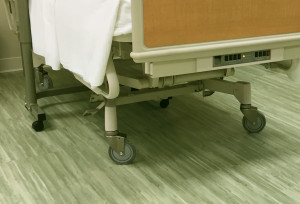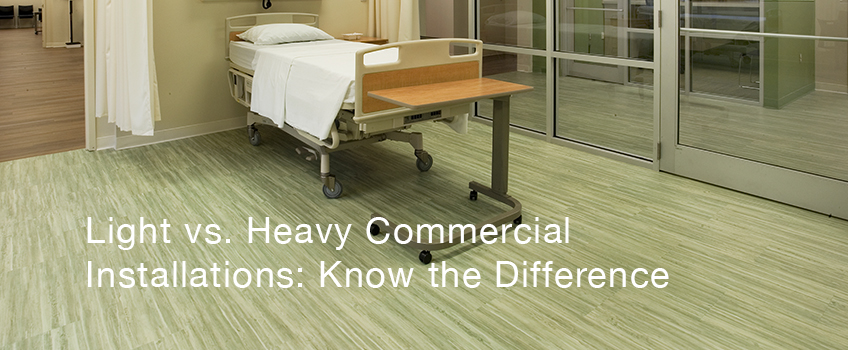This is the second half of our two-part series to help us all understand LVF in commercial installations. As we stated in our previous posting, end-users, designers, retailers and installers should always be aware of the manufacturer’s recommendations for their products; most of us publish a Commercial Use Designation Guide.
(Editor’s Note: Check out the commercial warranties on these NovaFloor® products: NovaCore™, Hartsfield™, Birkdale™, Casa™, and Lyndon™.)
What types of installations are considered light commercial?
Typical light commercial areas are small retail shops such as art galleries, specialty boutiques, photography studios, jewelry stores, etc. Professional offices for doctors, lawyers, and accountants, as well as office suites in larger commercial office buildings, are also generally considered “light commercial.” Vending and kitchen areas (non-cooking) also are great places to put luxury vinyl flooring. But remember, it’s always best to consult the manufacturer’s technical services department for more complete lists.
So, floating or clic LVF is okay to use in commercial applications?
Floating/clic flooring can be used in light commercial applications, but the seller, installer and consumer need to be aware of the fact that this is a floating floor. (Note: for more information about floating floors, see “Floating LVT vs. Glue-Down LVT, Part One”) So consideration needs to be made as to what will be on top of the floor: racks with heavy point loads? Heavy display cabinets? Or is it just a small boutique shop where most of the items are on the walls in cabinets or in lightweight displays? Maybe it’s a camera shop and everything is in glass displays and on the walls? Knowing the actual end-use is critical in placement of a clic floor in a commercial application. And don’t forget … there is have loose lay which may be a better option.
What special considerations need to be made for maintenance in commercial applications? For daily cleaning, we still recommend sweeping and dust mopping. Use of a neutral pH cleaning solution is great for area of high dirt (entrances, etc.) and can be damp mopped on for soiled areas.
Do I need to put a finish or wax on commercially used LVF?
If the consumer wants to use a commercial finish on the floor, there are options available to them but it’s not necessary with LVF. Remember, using a finish is not a one-time thing. As soon as you put one on the floor, you’re now committed to a maintenance routine which includes reapplying the finish and at least yearly stripping of the finish layers.
What type of installations are considered heavy commercial?
These are areas of use with floors subjected to heavy static and dynamic loads, caster use, heavy point loads and moderate to heavy traffic. Portable furnishings with casters, rests and wheels that concentrate the weight of the appliance or equipment are very damaging to resilient flooring. Examples include auto dealerships, entrance and exit ways from buildings, mall common areas, retail stores, locker room dry areas, hospital patient rooms, labs, and nursing homes.
What is the difference in my warranty from light commercial to heavy commercial?
The difference is generally in the length of the wear period. Each product is classified according to the wear layer as light or heavy, and the number of years of coverage is based on this as well. A thicker wear layer on a product will generally give either a longer wear period or heavier commercial use.
You mentioned “lack of rolling loads” in the light commercial description, what

AVA® Installation at LaGrange College Nursing School
type of rolling loads are there?
Rolling loads are hospital beds, 2-wheeled or 4-wheeled industrial carts, or pallet jacks; basically anything designed with wheels to transport heavy items. Hospital beds are included because of the weight of the bed itself plus a patient can be over 750lbs. Lightweight carts like mail carts in an office can be exempt, but remember even these (when in constant use) in hallways will contribute to wear of the flooring.
Are chair casters considered rolling loads?
Yes, chair castors are rolling loads and can be more devastating to a floor than a 2-wheeled cart. Chair castors generally never leave a 10 square foot area and have a consistent weight attached to them. The sitter, when rolling around, will cause a consistent wear pattern that will prematurely wear a vinyl floor. We always recommend a clear heavy vinyl chair mat for use under office chairs.
________________________________
This concludes our series on commercial flooring. Thank you to our own Jim Kups, North America Technical Manager, Novalis Innovative Flooring, for addressing this topic for our readers. Have a question from this article? let us know!


